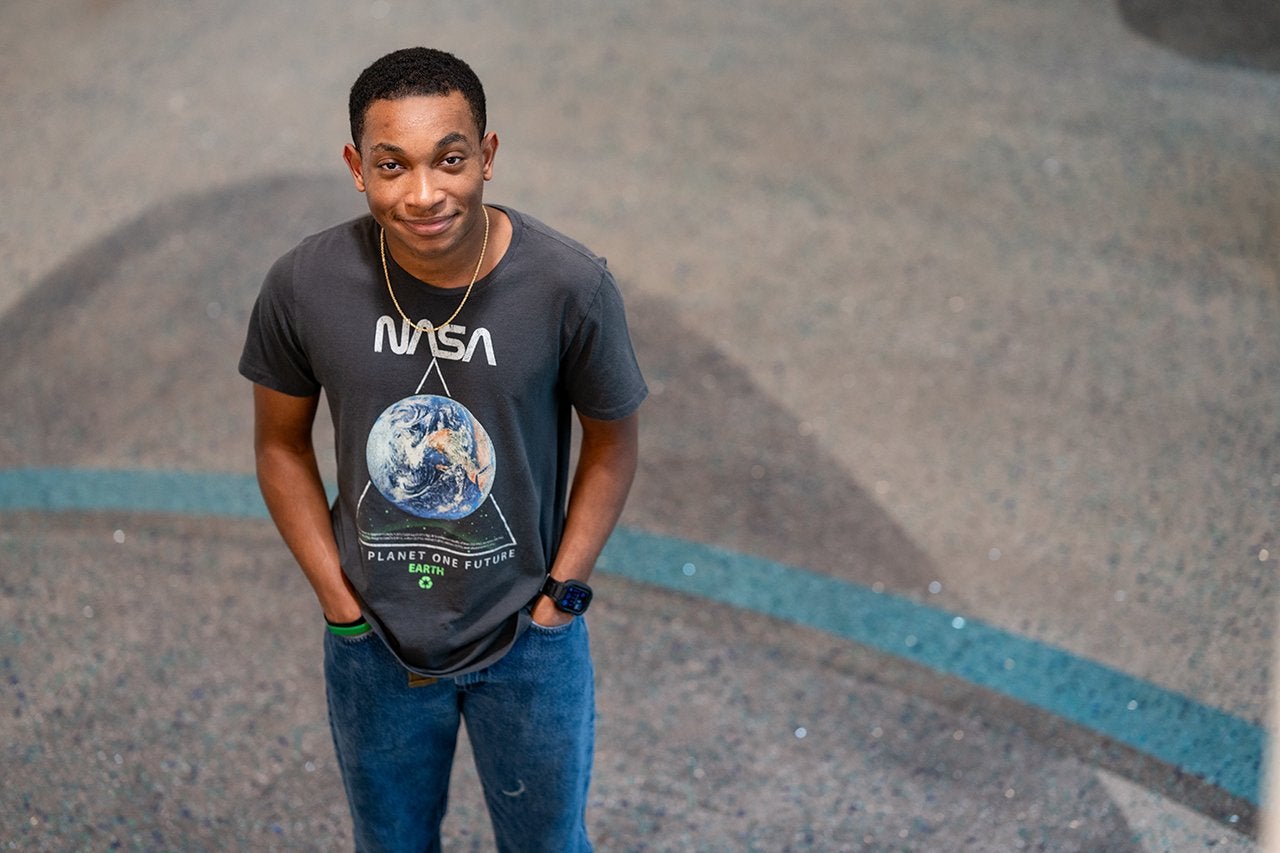Planning a NASA mission to land a rover on the dwarf planet Ceres isn’t something a whole lot of people can say they’ve done. But that’s exactly what College of Charleston sophomore Tyler Glymph did during his internship with NASA last summer.
A Columbia, South Carolina, native majoring in geology and minoring in astronomy and biology, Glymph acted as chief scientist for the mission to Ceres, which lies in the asteroid belt between Mars and Jupiter.
“My ultimate goal is to start my own space company agency,” says Glymph, a 1967 Legacy Scholar and Charleston Fellow who is also a recipient of the Colonial Scholarship and a member of the Honors College entrepreneurship community STEAM E-LLC and of LS-AMP, a minority enrichment program.
The College Today caught up with Glymph to find out more about his online summer internship with NASA, which came about through NASA’s L’Space Program, a 12-week academy conducted with Arizona State University where undergraduate STEM students do hands-on learning by creating mission procedures and protocols. Here’s what he had to say.
Was the internship for an actual NASA mission or just for educational purposes?
It’s a real project, one that NASA has been thinking about for a while. NASA recently released a list of planets of interest, and Ceres is on that list.
Why Ceres?
These dwarf planets and asteroids hold a lot of knowledge to how the universe formed. They contain a lot of organic compounds and frozen water. Ceres might even have liquid water closer to the core. We’re not really sure. But that’s the kind of information we need to know – how life was created and survived in harsh environments like space.
Is it fair to say that, with NASA’s help, you and the other interns planned out the whole mission, from designing the spacecraft and the rover to calculating the launch and landing?
For the most part, yes. We designed the rover, including what the onboard scientific instruments are going to do, the risk protocols and the base cost of the mission, all while trying to stay below our budget of $300 million dollars. The only thing we didn’t do is the rocketering part.
What was the best part about the internship?
Working with a team of 15 people who made me the chief scientist of the mission. I was really struck by that because there were a lot of other people who were way more qualified than I was, I think.
What were your responsibilities?
Making sure the science team worked well together and collaborated with the engineering and programmatic teams. We were all working overtime at the end to finish our final project, the PDR, or Preliminary Design Review, which is an incredibly detailed description of the mission, which we presented to the Arizona State L’Space department in August.
What kinds of challenges did you run up against?
The main challenges were working as a team because everyone was good at working by themselves, but having to collaborate and create one big product is difficult. We also had to be creative. Going to Ceres is not as concrete as going to the moon since no one has ever been to Ceres before.
What was the biggest takeaway?
I never really understood how NASA could start a project from the ground up into the final product because all you really see are the later stages of the project. But it was really cool to see the beginning part and how many people it takes to plan out one small mission. A full-scale mission can involve 200,000 people, which is just insane.




